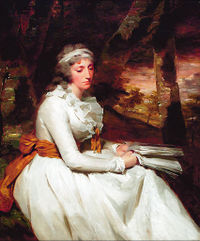Annotation:I'll Gang Nae Mair to Yon Town
Back to I'll Gang Nae Mair to Yon Town
I'LL GANG/GAR NAE MAIR TO/TAE YON TOON/TOUN/TOWN. AKA - "I'll Go No More to Your Town," "Bha mi 'n de air Cheilidh" (I went visiting yesterday). AKA and see "Lucky in Love," "Oh Gang with Me to Yon Town," "Pope's Toe (The)." Scottish, English; Reel. England, Northumberland. A Major (Kennedy, Raven): F Major (Athole, Bremner, Kerr, Skye, Surenne, Williamson): G Major (Jones). Standard tuning (fiddle). AB (Surenne): AAB (Gow, Jones): AABB (Athole, Bremner, Gow, Kennedy, Raven, Williamson): AABB' (Kerr, Skye). John Glen (1891) finds the earliest printing of this tune in Robert Bremner's 1757 collection (p. 6). The title appears in Henry Robson's list of popular Northumbrian song and dance tunes ("The Northern Minstrel's Budget"), which he published c. 1800. O'Neill (1922) remarks: "Popular since its first publication in Bremner's Collection of Scots Reels or Country Dances 1757, 'I'll gae nae mair to yon town' has been a fruitful source of variants which circulated under various titles. The variant herewith presented, was found without a name in Sergt. O'Neill's manuscripts."
Miss Lucy (Louisa) Johnston of Hilton was a charming and accomplished beauty at the close of the 18th century; a musician and frequenter of concerts and the dance assembly until she married one Richard Oswald of Auchencruive in 1793. Robert Burns wrote extra verses for the song "I'll gang nae mair to yon toon" (which he called "I'll Ay Ca' in by Yon Town" or "O, Wat ye Wha's in Yon Town") in honor of her arrival at her husband's family seat, near where he lived:

O' wat ye wha's is yon toun,
Ye see the e'ening sun upon?
The fairest maid's in yon toun,
That e'ening sun is shining on.
She died of tuberculosis four years later, after the birth of two daughters, despite Oswald's efforts to contain the disease by taking her to Portugal where the climate was thought healthful.
There is a British regimental march with a similar title called "We'll Gang nae Mair tae Yon Toon," however, it is a different and unrelated melody than the reel.
See also the Irish variant "Lucky in Love."
Source for notated version: manuscripts in the possession of Chicago Police Sergeant James O'Neill, originally from County Down-many from the playing of his father [O'Neill].
Printed sources: Anderson (Anderson's Budget of Strathspeys, Reels & Country Dances for the German Flute or Violin), Edinburgh, 1820; p. 22. Anonymous (A Companion to the reticule), 1833; p. 9. Bremner (A Collection of Scots Reels), 1757; p. 6 (appears as "I'll gae nae mair to your Town"). Gow (Complete Repository), Part 1, 1799; p. 28. Johnson (Scots Musical Museum), 1797; No. 458. Jones [ed.] (Complete Tutor Violin), c. 1815; p. 20. Kennedy (Fiddler's Tune Book), vol. 2, 1954; p. 16. Kerr (Merry Melodies), vol. 2; No. 180, p. 21. MacDonald (The Skye Collection), 1887; p. 140. O'Neill (Waifs and Strays of Gaelic Melody), 1922; No. 256. Raven (English Country Dance Tunes), 1984; p. 151. Stewart-Robertson (The Athole Collection), 1884; p. 205. Surenne (Dance Music of Scotland), 1852; p. 57. Williamson (English, Welsh, Scottish and Irish Fiddle Tunes), 1976; p. 58.
Recorded sources:
See also listing at:
Jane Keefer's Folk Music Index: An Index to Recorded Sources [1]
Alan Snyder's Cape Breton Fiddle Recordings Index [2]
